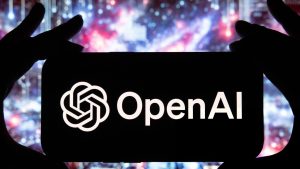Last week, I spent 5 hours and $49 on Google\’s latest AI Essentials course for beginners. After completing the course, I wanted to share the five main takeaways that stood out, the pros and cons of the course, and whether the certification you receive at the end will actually help you advance your career.
The course provided a solid foundation for understanding AI tools and their use in various industries. Here\’s a breakdown of the most valuable lessons I learned, along with tips and tricks to improve your use of AI.
1. Three Main Types of AI Tools

The first major takeaway is that AI tools can be categorized into three main types: Standalone AI Tools, Tools with Integrated AI Features, and Custom AI Solutions. Each of these serves a different purpose and can be used to solve various problems based on user needs.
Standalone AI Tools

Standalone AI tools are independent software applications powered by AI. These tools are designed to work autonomously and don’t require any special setup or integration with other platforms. Some examples include:
- Chatbots like ChatGPT, Claude, and Google’s Gemini.
- Specialized tools like MidJourney for image generation, Otter AI for transcription, or Gamma for presentation design.
What makes these tools unique is their ability to function directly through their websites or apps. They don’t need to be embedded in other software, making them highly accessible and user-friendly.
Tools with Integrated AI Features

Unlike standalone tools, some software integrates AI features to enhance functionality. For example, Google Docs has a built-in AI feature (Google Gemini) that allows you to adjust and refine text directly within the document. You don’t need to switch between apps, as the AI tool is embedded within the workspace itself.
A good way to compare these tools is by considering whether you want to export your work to a standalone AI tool (e.g., copy-pasting text into ChatGPT for editing) or use the AI features built into your existing software (e.g., making edits directly in Google Docs with Gemini).
Custom AI Solutions

Custom AI solutions are tailored to solve specific problems within an organization or industry. One notable example is the AI system developed by Johns Hopkins University to detect sepsis. The system improved diagnostic accuracy from 2-5% to 40%.
You might think that custom AI solutions are only for highly technical environments, but that’s not the case. For instance, a custom AI solution can be created to analyze client data for a sales team and rank clients by how likely they are to need assistance, based on factors like seasonality, historical data, and industry trends. These solutions often require little to no technical expertise from the end user, making them highly accessible.
2. Prompt Engineering: Surface the Implied Context

The second big lesson from the course focuses on prompt engineering. This involves how you frame requests when interacting with AI tools like ChatGPT or Google Gemini.
One of the most important strategies is to surface the implied context. To explain this, imagine a friend asks you for restaurant recommendations. If your friend is vegetarian, you instinctively recommend places that cater to vegetarians, even if they didn’t specifically ask for it. The fact that they are vegetarian is implied context.
When working with AI, you need to explicitly state that implied context. For example, if you’re brainstorming negotiation strategies for a raise, include details like your past performance, industry trends, and previous salary increases. If you leave out this context, the AI will give you a generic, lower-quality response.
The more context you provide, the better the AI’s output will be. If you want to dive deeper into prompt engineering, focus on ensuring that every request you make contains all relevant background information.
3. Know When to Use Zero Shot vs. Few Shot Prompting

Another critical takeaway is the difference between zero-shot and few-shot prompting. When working with AI, the word \”shot\” refers to the number of examples you provide in a prompt.
- Zero-shot prompting: You ask the AI to complete a task without providing any examples. For instance, a zero-shot prompt might be: “Write me a pickup line for Bumble.”
- One-shot prompting: You provide one example for the AI to base its response on. For example: “Write me a pickup line for Bumble. Here’s one my friend used that worked well for him.”
- Few-shot prompting: You give two or more examples to guide the AI’s response. The more relevant examples you provide, the better the output.
In short, the more examples you offer, the more specific and relevant the AI’s response will be. This technique is especially useful when you\’re working on tasks where the quality of the response matters—such as crafting marketing copy, writing scripts, or even generating creative ideas.
4. Use Chain of Thought Prompting for Complex Tasks

Chain of thought prompting involves breaking a task into smaller, more manageable steps. This helps the AI deliver accurate and consistent results, especially when the task at hand is more complex.
Let’s say you need to write a cover letter. Here are two approaches you could take:
- Option 1: Share your resume and job description with the chatbot and ask it to generate an entire cover letter in one go.
- Option 2: Break the task into steps. Start by asking the chatbot to generate an attention-grabbing hook based on your resume and the job description. After tweaking the hook, you can then move on to the body paragraph, and so on.
By dividing the task into smaller steps, you can make more precise adjustments along the way, ensuring that the final product is of higher quality. Chain of thought prompting is especially helpful when working on longer, multi-step tasks, like writing reports or proposals.
5. Understand the Limitations of AI

Finally, it’s essential to understand that AI, while powerful, has its limitations. There are three key areas where AI tools might fall short:
- Biased Data: The AI’s training data might be biased, leading to limited or skewed results. For example, a text-to-image model trained only on minimalistic graphics might struggle to produce more vibrant, detailed designs.
- Limited Information: AI models have a cutoff date for the data they are trained on. If the information you’re asking for wasn’t part of the training data, the AI may not provide an accurate or complete answer.
- Hallucinations: AI models can sometimes produce completely inaccurate outputs, known as hallucinations. These occur when the AI generates content that is factually incorrect or inconsistent with the input. This is why it\’s important to double-check AI-generated content, especially for high-stakes tasks like health-related queries.
Recognizing these limitations ensures that you use AI responsibly and effectively, especially in critical tasks that require accuracy and reliability.
Pros and Cons of Google’s AI Essentials Course

Now that we’ve covered the five major takeaways, let’s talk about the pros and cons of Google’s AI Essentials course.
Who Should Skip This Course?
If you’re already familiar with AI tools like ChatGPT or Google Gemini and use them regularly, you might find the course a bit too basic. While it explains complex concepts well, some of the examples are overly simplistic. For instance, one example discussed how AI could reduce customer service response times, but it didn’t delve deeper into whether the AI was a standalone tool or custom solution.
Who Is This Course For?
This course is excellent for beginners or those looking for a solid foundation in AI. Three key advantages make it worth your time:
- Expert Instructors: The course is taught by Google employees who are well-versed in AI and provide high-quality instruction.
- Clear Explanations with Visual Aids: If you’re a visual learner, the course uses simple graphics to break down complex topics, like comparing AI models to car engines.
- Interactive Elements: The quizzes and assignments are well-designed to reinforce learning, and they’re not so easy that you can just breeze through them. You actually need to pay attention to pass the graded assignments.
Additionally, the course provides a curated list of AI tools for beginners and a glossary of key AI terms. This adds value by giving learners resources they can use immediately.
Final Thoughts: Is the AI Essentials Course Worth It?

In conclusion, Google’s AI Essentials course is a great option for beginners and visual learners who want to gain a solid understanding of AI and its applications. While it may not be suitable for those already familiar with AI tools, it offers plenty of valuable insights for those just starting out.
The certification you receive at the end may not directly increase your salary, but it certainly adds a credible skill to your resume that can attract prospective employers. If you’re looking to improve your understanding of AI and want to build a foundation for more advanced learning, this course is a great first step.